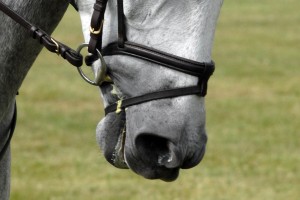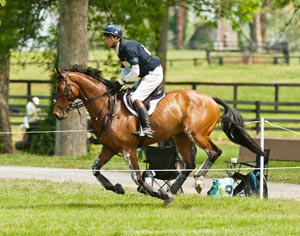If you are a horseman, chances are you are extremely conservative. I do not mean this in the political sense of liberal and conservative, but in the literal sense that you are disposed to preserve existing conditions. You have very good reasons for this conservatism when it comes to the welfare of your horse. The penalties for change without contemplation can be severe, and your horse pays the penalty with his health and soundness if you are wrong. If wisdom is the anticipation of consequence, then we all labor to be wise when it comes to our horses, because they trust us so completely with their well-being.

Looking back over my career, I find I have always been resistant to fads and changes in the horse world. Some fads, especially when it comes to apparel, do little harm to our horses, although bling says something about the rider’s need for attention rather than the attention she should pay to her horse. Other fads are more abusive (rollkur comes to mind) and some, like the now outmoded use of a true interval system of conditioning (short bursts of maximum exertion), injure horses with sickening regularity. Unlike humans, horses do not self-monitor their own soundness. If you ask a good horse to gallop until he is exhausted, he will cheerfully injure himself for you. Modern eventers may speak of using an interval system to condition their horses, but what they really mean is they use an intermittent system of exercise and conditioning.
Although conservatism has its benefits, we must always be open to improvement in the care and training of our horses, especially when that change is supported by scientific research. I am speaking of two topics I have discussed previously: the use and abuse of tight nosebands in dressage and the unsafe and unsteady galloping position that has crept into our teaching.
One Noseband for All?
Nosebands are one of my many irritants when coaching. For example, flash nosebands are ubiquitous in the eventing world. Almost every horse I see is wearing one. Flash nosebands are inherently ill fitting a flash is basically an inefficient figure-eight noseband so they are invariably overtightened, causing a pronounced indentation in the flesh of the nasal bone and, occasionally, small sores on the lips. In addition, these nosebands can interfere with the horse’s normal swallowing mechanism, producing the very resistance they are intended to cure.
I can’t decide which irritates me more: overtightened nosebands or the mindless application of equipment, regardless of whether it is suitable for this horse at this stage of training. Not every horse in the eventing world needs or goes well in a flash noseband. Yet when I ask riders whether they have tried other nosebands, or even no noseband, they look at me as if I had just stepped down the ramp of the mother ship. Obviously, it has never occurred to them to try something else. After all, everybody tacks up their horses this way, so it must be correct. Sigh.
In the past, I have spoken out against the use of overly tight nosebands on pragmatic rather than scientific grounds. My reasoning was that both the International Equestrian Federation (FEI) and U.S. Equestrian Federation rules consider it a good sign when a horse softly chews the bit, and judges reward this behavior during the dressage test with favorable marks. A good working definition of classical training is that we do not ask the horse to do anything he does not do in nature. Clearly, strapping a horse’s mouth shut is unnatural and will not produce classical results in terms of acceptance of the bit, softness of contact or self-carriage. Naturally, we want the best possible score for our horses, but by cranking the noseband as tight as possible, we actually prevent them from accepting the bit correctly.
Given all this, you can understand that a recent series of articles at www.eurodressage.com got my attention and led me to scientific studies regarding the effect of tight nosebands on equines. The researchers’ findings that tight nosebands are abusive to horses are not surprising. However, new scientific knowledge means that we now can prove something that was merely alleged in the past.
If our current practices are proven to be abusive, even unintentionally, then we must immediately adopt new practices based on the latest findings. What surprises me is that this is not happening: Riders and trainers are not changing their practices in response to new information. We do things a certain way because we have always done them this way and it is too much trouble to learn new techniques. This attitude is prevalent in the horse world and is a huge barrier to improving the health and training of our horses.
Still Galloping Inefficiently
In the same vein as the continuing abusive use of nosebands, eventers are still being taught an inefficient and unstable galloping position long after the Royal Veterinary College in London (in conjunction with the British Racing School) determined that the most efficient, scientifically correct galloping position is very different from the one many eventing instructors teach.

This puzzles me on several levels. First, the various associations and organizations involved in the operation and advancement of eventing exhibit a distinct lack of curiosity about the fundamentals and mechanics of our sport. In addition, instructors seem to have scant critical faculty when it comes to the mechanical principles they pass on to their students. They seem content to repeat something they heard along the way.
We need a continued re-examination of our basic principles with an eye toward adjustment and improvement, especially when those changes and alterations are based on scientific research. Sadly, this is not the case. At present, too many eventers are standing straight-legged above their horses, resting their body weight on bridges against their horses’ necks and galloping like lemmings toward the cliff. This lack of both curiosity and a desire to improve is a disservice to our sport. The standing position at the gallop has the potential to damage eventing as much as the crest release did to the hunter/jumper world, which created generations of riders unable to maintain a connection with their horses’ mouths. If we do not learn from others’ mistakes, we are doomed to repeat them.
While watching the Rolex Kentucky Three-Day Event last spring, it was clear to me that many riders’ problems with the course were caused by woefully incorrect galloping positions. Four-star horses are exuberant by nature, and once we get them completely fit, they take an attitude toward speed and fixed obstacles that is not for everyone. Time after time, riders came into view standing straight up in their stirrups. Because their horses were galloping so aggressively, they usually leaned back on the reins in a vain attempt to slow down and set up for a serious combination.
When a rider stands straight up and pulls on the reins, his horse will usually invert his shape, with his head high and his back low and locked. This shape in the approach to a fence is almost guaranteed to produce trouble, and the Rolex riders who used this technique were very susceptible to error. When you contrast this with the position that cross-country stylists such as Great Britain’s William Fox-Pitt and New Zealand’s Andrew Nicholson use, the differences are stark. It is interesting how good results always seem to follow sound fundamentals.
Based on scientific findings, then, many of our U.S. riders’ fundamentals are flawed in terms of galloping and jumping across country. Obviously, we need some serious study and remedial action. Possibly it is time for the USEF and the U.S. Eventing Association to join some kind of partnership with organizations such as the Chris McCarron North American Racing Academy or the British Racing School. In their field, these two organizations have the same credibility as our dressage and show-jumping gurus, and we should avail ourselves of their expertise.
I understand there are coaches and theoreticians around the country who disagree with me, but to date their opinions are just that?opinions rather than scientific evidence. Until further studies prove that standing in the stirrups is the most efficient way to gallop, I will continue to teach according to current findings.
In closing, it puzzles me how little study and time eventers put into the cross-country part of their sport. Riders cheerfully spend six months in a dressage barn learning to sit the trot. They will leap at the chance to work for show-jumping trainers to improve their timing and ring-craft in that discipline. Yet, when it comes to in-depth study about riding at speed over fixed obstacles, nothing happens.
It would make sense for these riders to become involved with a steeplechase barn. There they could learn to gallop correctly, restrain their horses using leverage rather than sharp bits and gain a sense of pace that will make their speeds around the Rolex cross-country course seem like a walk in the park.
While eventing is a risk sport, we must make every effort to control that risk with expertise. Repeating our mistakes with an expectation of improvement is a good definition of insanity. People outside of our sport have remarked that they think we are crazy to go cross country. Let’s not prove them right. It’s time for a change.
This article originally appeared in the September 2012 issue of Practical Horseman magazine.










